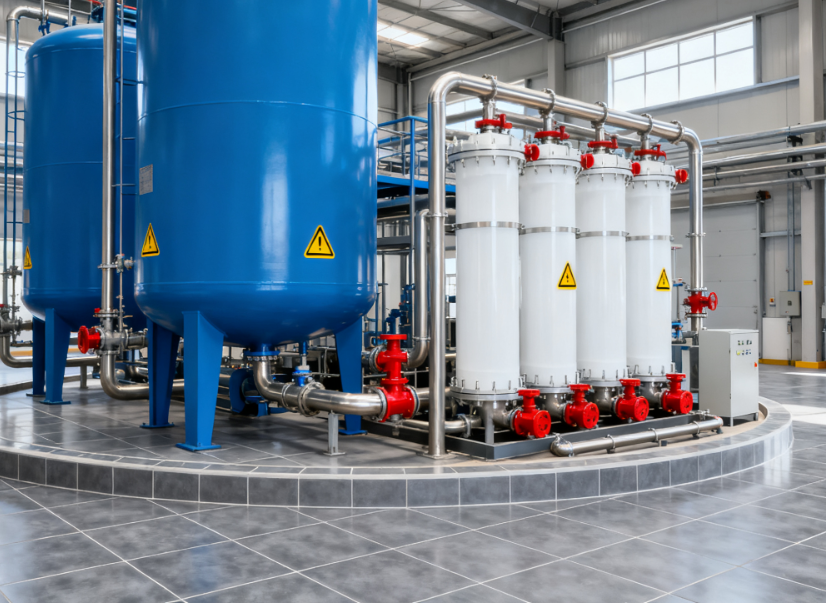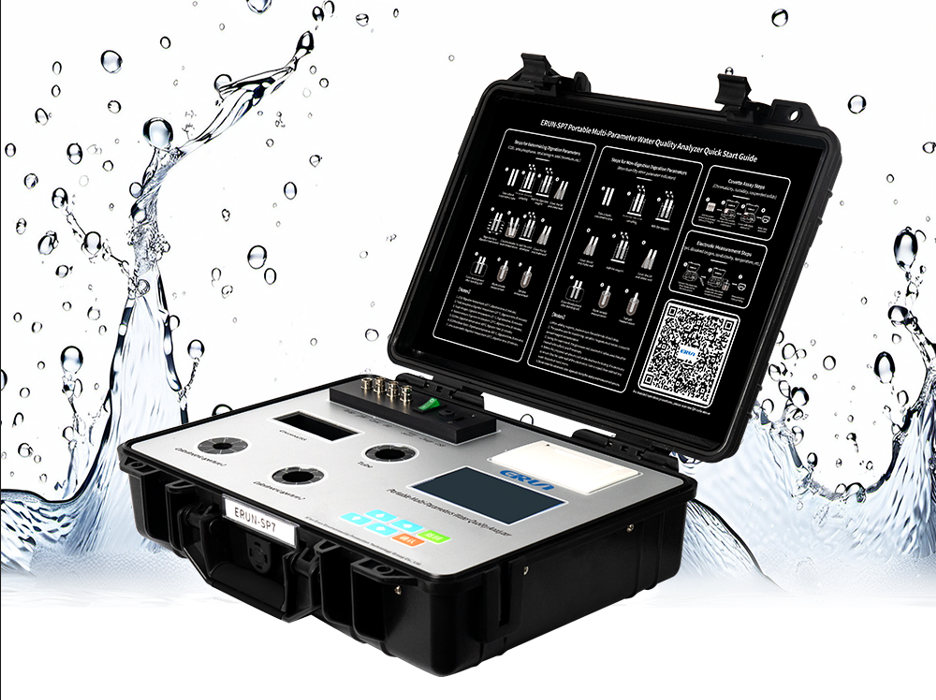Maintaining high-quality boiler water is essential for every industrial operation. Whether used in power plants, manufacturing, or heating systems, boiler water chemistry determines the safety, efficiency, and lifespan of the entire system. Among all water-quality indicators, conductivity is one of the most widely used yet often misunderstood.
This article explains why conductivity must be measured in boiler water, what problems it reveals, and how using a reliable tool—such as the ERUN-SP7 portable multi-parameter water quality detector—helps operators manage boiler systems with confidence.
Conductivity refers to the ability of water to conduct an electrical current. The higher the concentration of dissolved ions—such as chlorides, sulfates, carbonate, caustic soda, or dissolved solids—the higher the conductivity.
In boiler operation, conductivity becomes a fast and convenient proxy for Total Dissolved Solids (TDS). Because TDS levels directly influence corrosion, scaling, and steam purity, a change in conductivity often signals a change in boiler water quality long before visual problems appear.
Boilers require precise control of dissolved solids. High TDS leads to foaming, which produces wet steam, reduces heat transfer efficiency, and may contaminate downstream equipment. Monitoring conductivity provides a quick method to determine when blowdown is necessary.
As TDS increases, minerals such as calcium and magnesium begin to precipitate and form hard scale deposits on boiler tubes. Scale acts like insulation, forcing boilers to consume more energy and increasing the risk of overheating. Consistent conductivity measurement helps identify scaling risk early.
Low pH, dissolved oxygen, and high chloride concentrations accelerate internal corrosion. These substances also elevate water conductivity. Monitoring conductivity trends can reveal corrosion issues before tube failure or leakage occurs.
High conductivity in boiler water often results in carryover, allowing dissolved solids to enter the steam. This causes deposits in turbines, valves, and heat exchangers. Measuring conductivity helps maintain steam purity, ensuring reliable equipment performance.
Most modern boiler systems use conductivity-based automatic blowdown controllers. By measuring conductivity continuously, the system discharges only the required amount of water, minimizing energy loss while keeping the boiler stable.

Excessive TDS
Foaming and carryover
Scaling on boiler tubes
Reduced heat transfer efficiency
Higher fuel consumption
Over-blowdown, wasting heat and chemicals
Potential pH imbalance
Increased operational cost
An optimized boiler water program seeks to maintain conductivity within a specific range customized to pressure, water chemistry, and system design.
The ERUN-SP7 portable multi-parameter water quality detector is designed for complex industrial water environments, making it exceptionally suited for boiler water testing. It supports the measurement of heavy metals, inorganic salts, COD, ammonia nitrogen, total phosphorus, chlorine compounds, turbidity, hardness, sulfates, nitrite, and more—while allowing customized expansion of additional detection items.
Accurate conductivity measurement to monitor TDS and maintain safe boiler conditions.
Multi-parameter capability, enabling on-site detection of corrosion-related ions such as chloride, sulfate, or hardness.
Portable design, ideal for technicians working across different boiler units or remote stations.
Rapid data reading, helping operators act quickly on blowdown decisions.
Expandable testing modules, ensuring flexibility for different boiler water treatment standards.
Together, these advantages make the ERUN-SP7 a reliable tool for maintaining operational stability, reducing downtime, and extending boiler lifespan.

Each boiler system has its recommended conductivity range based on pressure and water treatment chemicals.
Conduct manual tests using ERUN-SP7 at key points such as:
feedwater
boiler drum
blowdown line
condensate return
Corrosion or scaling issues rarely depend on a single indicator. Measuring parameters such as hardness, chlorides, alkalinity, and pH provides a complete picture of water chemistry.
Regular conductivity monitoring ensures that boiler chemicals, softening processes, and blowdown cycles remain optimized.
Conductivity is one of the most powerful indicators in boiler water management. It provides a simple yet accurate way to monitor TDS levels, prevent scaling and corrosion, and ensure consistent steam quality.
By integrating a high-precision tool like the ERUN portable water quality tester, operators can achieve better control, reduce operational risks, and improve long-term efficiency.
If your facility relies on boilers, measuring conductivity is not optional—it is essential.